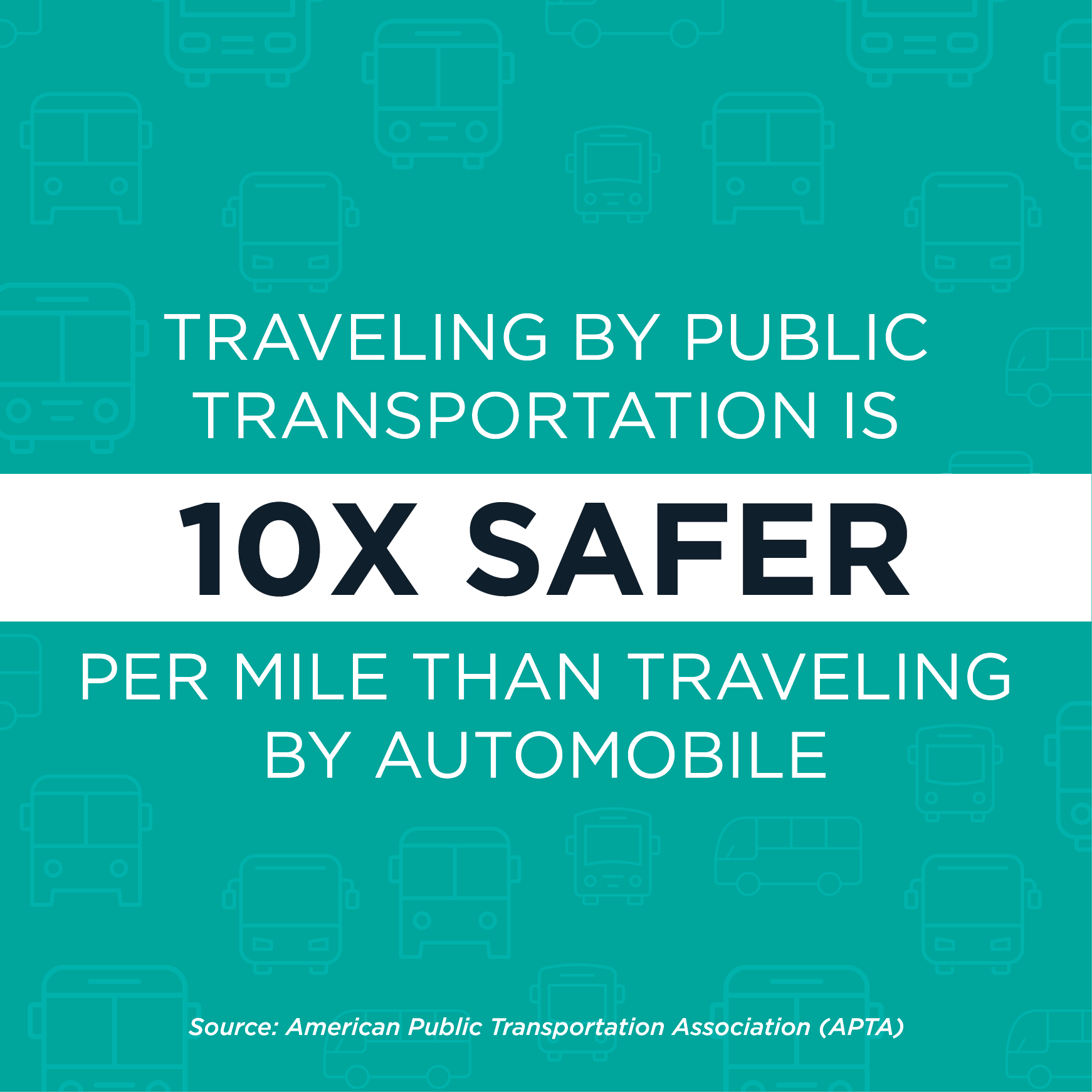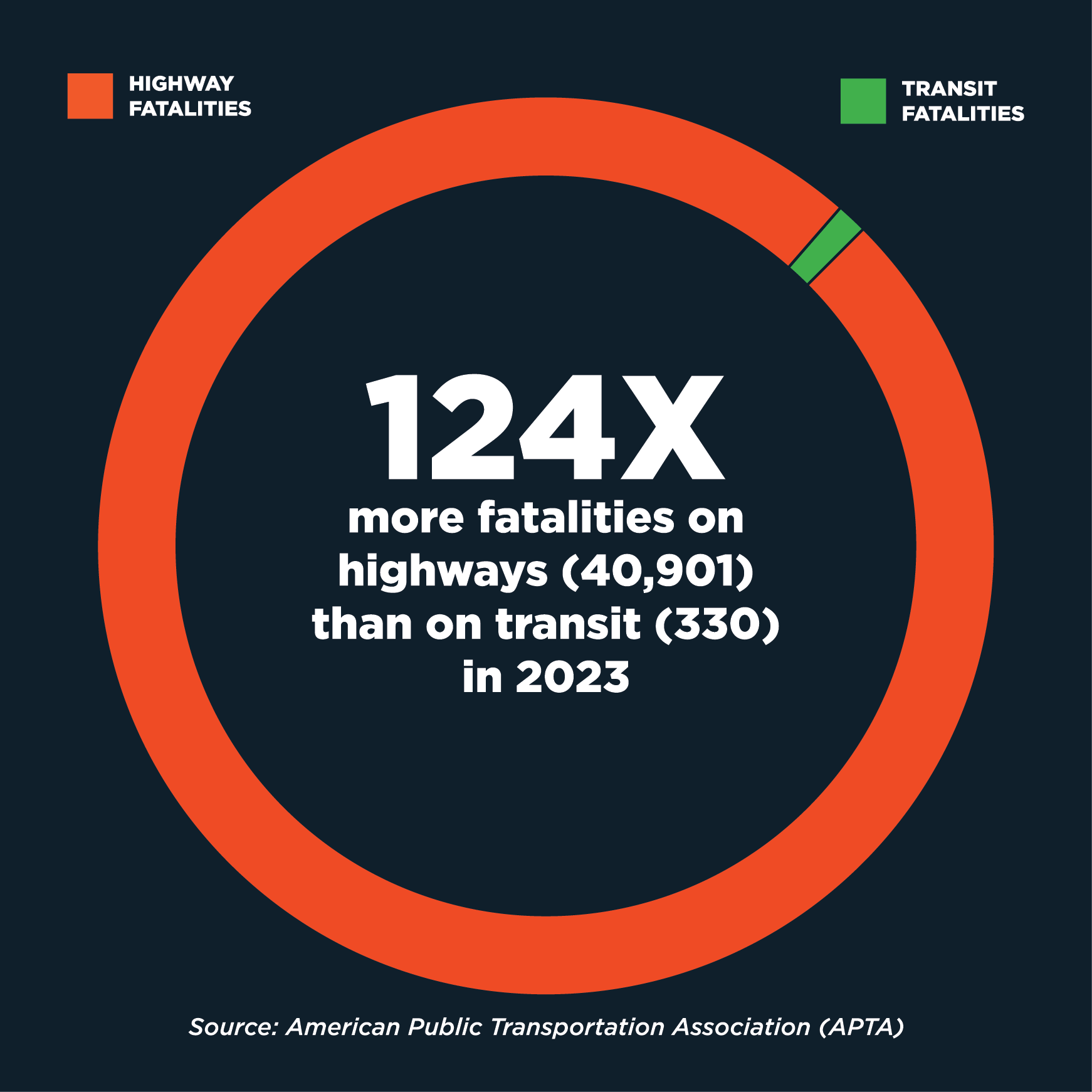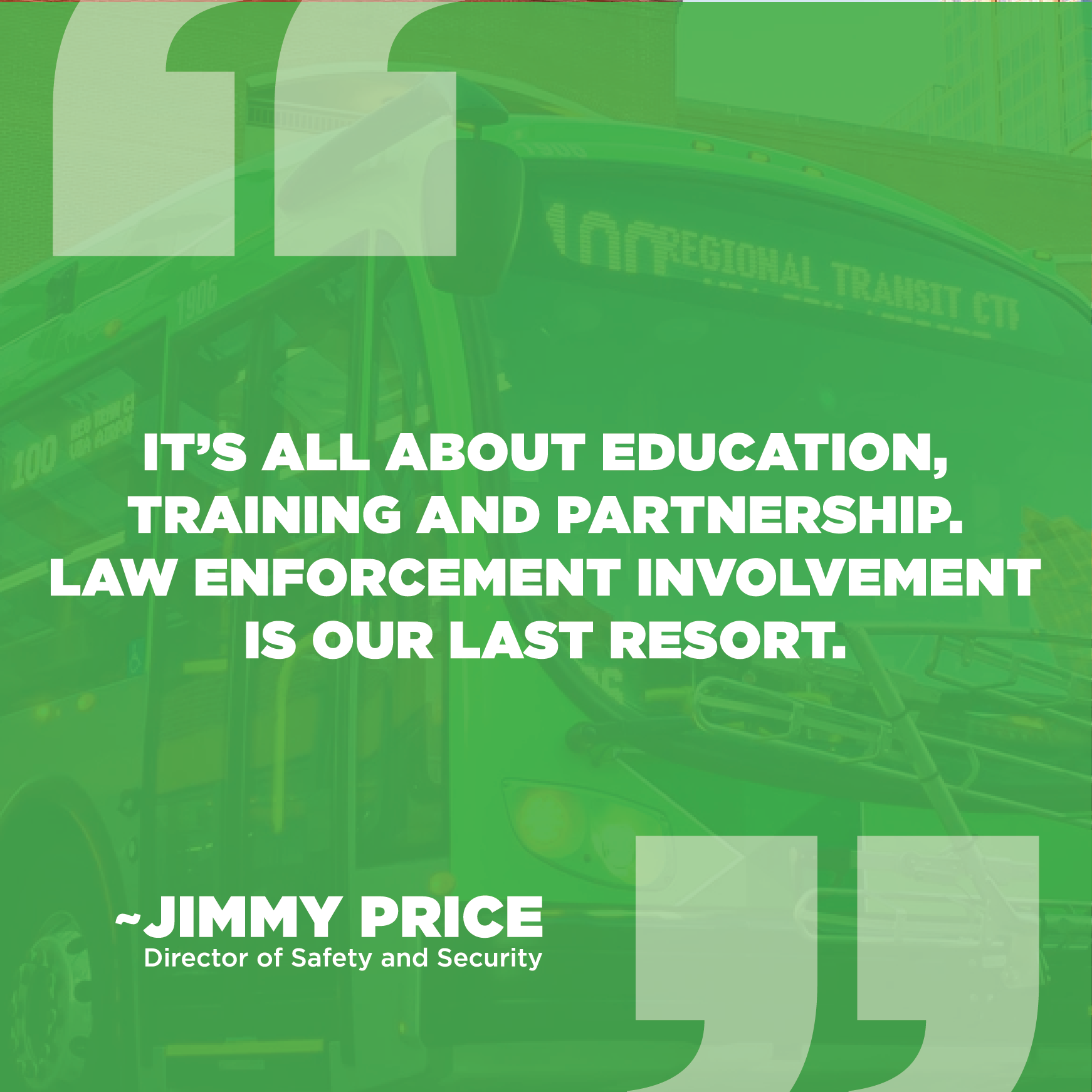GoTriangle’s Vision statement is “To be our region’s trusted mobility partner.” In that vein, riders must trust that they will have safe and reliable transportation to get them to and from work, school or play. And bus operators must trust that they can safely do their jobs – while also being aware of the safety and security of their vehicle and riders.
GoTriangle, like all public transit agencies, takes safety incredibly seriously. Before an operator gets behind the wheel of a vehicle, he or she must complete a rigorous training program that instructs not only about how to safely operate a bus in service, but also about emergency procedures, accident/incident reporting procedures, defensive bus driving, situational awareness, conflict resolution and de-escalation and more.
Safety is not just a talking point. The Federal Transit Administration mandates that federally funded transit agencies have programs in place to conduct safety risk assessments, identify safety risk mitigations or strategies to reduce assaults, according to Director of Safety and Security Jimmy Price.
“We are required to report how we are assessing, mitigating and monitoring the safety risk associated with assaults on transit workers. In addition, we focus on the safety of our riders.”

GoTriangle tracks and analyzes incidents monthly, including inappropriate behaviors, code of conduct violations and “anything that may align with security-related issues requiring security or law enforcement involvement,” said Price.
And the fact remains that public transportation is a safe option. According to the American Public Transportation Association (APTA), there were 124 times more fatalities on highways (40,901) than on transit in 2023 and traveling by public transportation is 10 times safer per mile than traveling by automobile. Additionally, Todd Litman, founder and executive director of the Victoria Transport Policy Institute in Canada, has research that shows the risk of death or industry on public transit is one-tenth that of automobile travel.
Perhaps that’s why the stabbing death of a young woman on board a light rail car in Charlotte in August 2025 was so disturbing. At its core, public transit is safe. But it is public.
Being prepared
When something horrific happens like what happened in Charlotte, it impacts all transit agencies. Price noted that in the immediate aftermath GoTriangle Operations leadership diligently discussed the situation with its team and rolled out refresher training programs to “emphasize the importance of situational awareness, as well as boarding and alighting procedures.” In fact, one of GoTriangle’s new hire bus driver training course module is called “Transit Operator Social Responsibilities and Awareness Training” which covers assaults, mental health awareness, suspicious activities awareness and reporting and human trafficking. It also reinforces that the GoTriangle Regional Transit Center and buses are designated Safe Places.
Safety education doesn’t end once an operator graduates and begins driving routes. GoTriangle is constantly studying trends and incorporating best practices into its operator training to ensure that all drivers and supervisors are ready for anything.
Said Price: “Staying vigilant is the starting point.”
Take human trafficking, for example. Just a few weeks after going through a course on how to spot possible trafficking, seasoned operator Justin Mbuyi put his “See Something, Say Something” training to the test.
“We are taught to look for red flags,” he said, “to look at passengers and see if anything is unusual.”

On one day, Mbuyi almost immediately noticed some red flags when a man and much younger women boarded his bus in Chapel Hill.
“He didn’t want the lady to talk. She was trying to say something to me, and he pushed her on to the bus,” said Mbuyi. “He also said ‘she doesn’t speak English.’”
That was Red Flag No. 1.
Mbuyi said the man also didn’t have fare for the bus and was asking for a courtesy ride.
That was Red Flag No. 2.
After the man and young woman got on the bus, they sat separate from one another.
The third Red Flag.
Mbuyi was on alert already, and he could make eye contact with the young woman via his rearview mirror.
“I could see fear in her eyes.”
Red Flag No. 4.
The man and young woman were also close enough to the front of the bus that Mbuyi could hear their conversation.
“He said she didn’t speak English, but when they were sitting, he would turn to talk to her in English.”
At that point, Mbuyi had noted enough red flags to call in to a supervisor. He also pushed the on-bus emergency/panic button, which all vehicles have.
Law enforcement was called to meet the bus at an upcoming stop. Unfortunately, the man and the young woman fled the bus before the authorities could apprehend them, even though Mbuyi told law enforcement officials the direction the people went upon exiting the bus; Mbuyi also filled out an incident report. Sadly, neither Mbuyi or GoTriangle know if the suspects were ever caught, or what became of the young woman.
Staying prepared
Mbuyi’s experience also underscores the inherent obstacles to completely managing safety and security on public transportation.
“Transit systems have to be open and accessible,” Anastasia Loukaitou-Sideris, interim dean at UCLA’s Luskin School of Public Affairs and a transit safety expert, told CNN recently. “It’s very difficult to install measures that you put, for example, in airports because the public is not going to accept such delays.”
Bus operators generally see every person that boards their buses during boarding and alighting. However, bus drivers are allowed comfort breaks from time to time where they may not set eyes on every rider that gets on the bus.
But that doesn’t mean that operators and supervisors aren’t vigilant; operators like Mbuyi are sometimes navigating agitated customers as they are also navigating Triangle traffic.
“The main thing for us is driving people safely, trying to keep focused on the road,” said Mbuyi. “We can’t spend 100 percent of our time looking at everyone.”
Operators are also trained extensively on de-escalation tactics.

“We train them to look around and see if there’s something out of the ordinary,” said Price. “It’s all about situational awareness and knowing your surroundings. If things are out of the ordinary or appear to be a threat, report to the nearest supervisor.”
Operators aren’t alone looking for the public’s best interest. At transit stations that GoTriangle serves throughout the region, bus supervisors and security personnel are on-site to provide further protective measures and keep an eye out for signs of concern. And of course, there are also security cameras constantly monitoring activity.
GoTriangle takes other steps beyond the buses, stops and stations themselves. Security Alerts with information of banned riders are posted at the Bus Operations Maintenance Facility – the starting point for operators to begin their routes. The agency has an Ambassador Program with a full-time transit ambassador and outreach specialist – serving as a conduit between the transit agency and community partners who can respond when riders need assistance in areas such as housing, clothing, food or even mental health assistance. Ambassadors can see to it that riders in need get winter clothing, personal hygiene items or more. The Ambassador Program is especially helpful when operators witness or overhear things from riders that alert the operator that someone is in need.
Said Price: “It’s a great opportunity to build trust with the riders and the community.”
All of these speak to the breadth of actions that transit agencies must take to ensure – as proactively and holistically as possible – safety for riders and bus drivers. And just like riders will always have a need to get to and from, so will transit agencies continue to learn and improve.
“It’s all about education, training and partnerships,” said Price. “Law enforcement involvement is our last resort.”